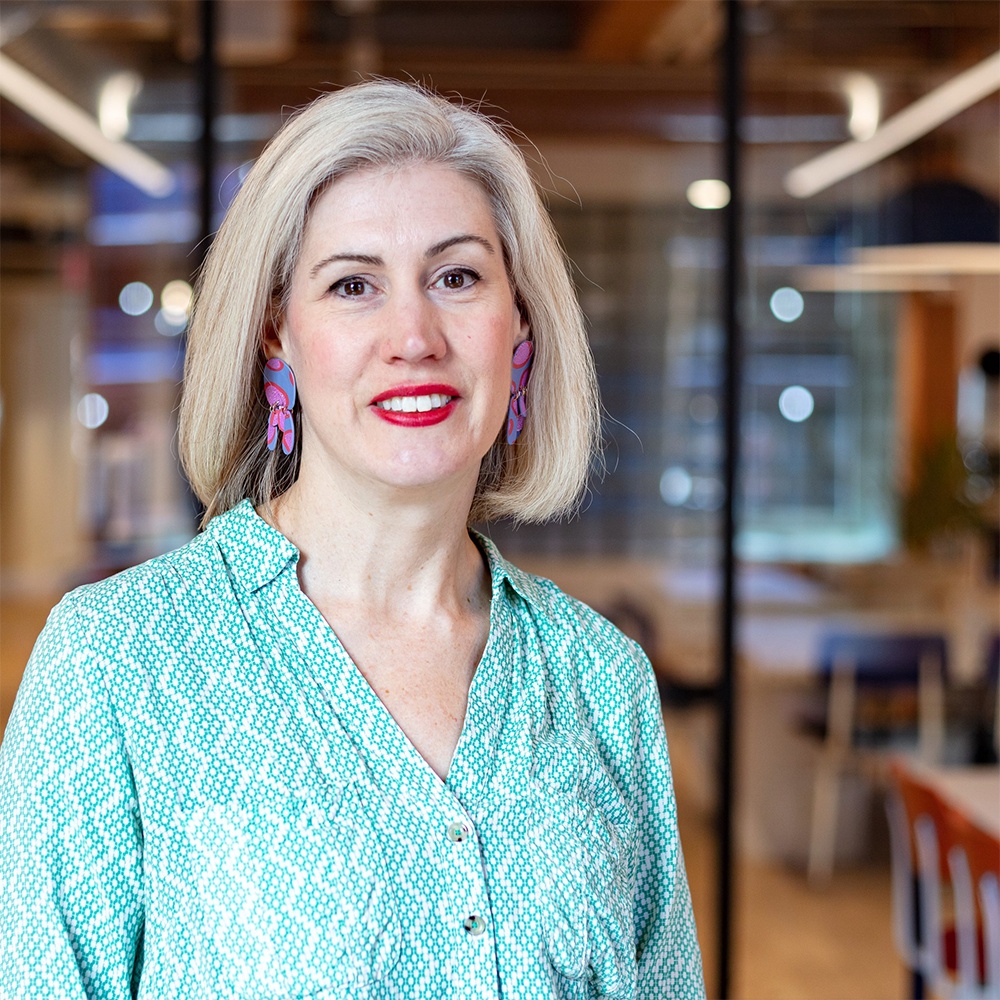Alison Nash AIA

Sustainability Coordinator, Architecture + Interiors/Associate, Sasaki Associates, Inc.
Professional or personal website:
https://www.sasaki.com/people/alison-nash/ and https://www.linkedin.com/in/alisonnash/
Degree(s):
MArch, BFA in Painting, and BA in English, Cornell University
Professional interests:
Integrating sustainable and regenerative thinking into the standard practice of architecture from initial concepts to built work.
BSA involvement:
BSA Board Director
When did you first become interested in architecture as a possible career?
Recently when I was cleaning out my childhood room, I discovered a 6th-grade fictional writing assignment describing my future life as a well-respected architect. I have no memory of this ambition and instead went to art school and pursued an English degree at Cornell, only realizing in my late 20s that I should pursue architectural training. In retrospect, my broad interests and curiosity for learning are a natural fit for practicing architecture in our current context.
What is your favorite Boston-area building or structure?
I really love visiting and exploring the galleries at the Isabella Stewart Gardner Museum. The Renzo Piano addition is a sensitive and beautiful enhancement to the original palace building with all its quirkiness and intimacy. It is such a special space that transports me to a different time and place whenever I visit.
Has your career taken you anywhere you didn’t expect?
When I began my career after art school in New York City with a “day job” working for a House Beautiful top 100 Interior Decorator, Thomas Jayne, shopping for fabrics and designing custom wallpaper for very wealthy clients, I didn’t expect I would become an architect with a specialization in sustainability. My career path meandered to include lots of different things, from making art quilts on a long-arm quilting machine to lighting-design consulting to working on higher-ed and commercial interior design projects prior to returning to graduate school for my master’s in architecture at Cornell.
What do you hope to contribute from your work?
My professional work intersects both projects—built work—and rethinking the changes needed to more fully integrate sustainability, resilience, and regenerative principles into our design process. I am most interested in how the built environment can influence human behavior and reveal natural systems. In our quest for reducing carbon emissions, we cannot lose sight of the healing power of beauty and that we rely on nature for life.
What do you see as the largest barrier to equity in your profession?
Achieving equity in the practice of architecture requires a cultural change, both within the profession and in the public’s conception of who an architect is and what an architect does. I am encouraged by programs such as Sasaki Foundation’s SEED program, which brings 40 to 50 high school students the chance to learn about the world of design and gives them daily opportunities to be immersed for a summer in a studio setting. There are other programs such as ACE mentoring, YouthBuild Boston, and the BSA’s own educational initiatives that empower students to see that becoming an architect is a career path where there are people like them and where they can make a difference in the world. Seasoned practitioners who do not have the lived experience of being “othered” yet are open to learning from others can have their outlook transformed by working with young people who are considering design as a career—it is often the folks who need the most education on how bias shows up are the architects with the most experience and expertise.
What policy from another city sets an example you think Boston could successfully follow?
I’m encouraged by the inclusion of WBLCA (whole building life cycle assessment) into rezoning policy in Vancouver, British Columbia, and the recent news that California has undertaken to incorporate upfront carbon considerations into a voluntary section of the CalGreen codes (Appendix A5.409) for buildings over 50,000 square feet. The CalGreen code has a specific purpose that sets it apart from building or energy codes: to “improve public health, reduce environmental impacts, and encourage sustainable construction in residential and nonresidential buildings.” Since we don’t have home rule here in Massachusetts, we are relying on a patchwork of zoning regulations, stretch code, and base energy code amendments to accomplish better outcomes for all. Perhaps it is time for a national Green Code that has health and climate equity as its primary focus?
Who do you most enjoy partnering with on a project?
Every day at Sasaki, I love having the chance to rub elbows with civil engineers to chat about precipitation data and stormwater, compare my knowledge of pollinators with an ecology-focused landscape architect, workshop the user-interface design and background data for Carbon Conscience with planners and user-interface designers, answer a landscape architect’s questions about high-performance building envelopes, and cook up ideas for how to visualize simulation data to inform designers’ decisions with computational design technologists.
Where do you find inspiration?
Curiosity and love of nature. Joy in the simple things like snowfall. Making things. Reading and learning about how nature and humans connect and intersect.
What would you like to see change about Boston’s built environment?
I would like to see more trees in all neighborhoods, streets, bike lanes, and sidewalks that are safe for kids and families. I’d like the T to become a world-class public transit system that we can rely on. I’d like to see homeowners and landlords investing in community solar and retrofitting apartments with features that enable everyone, not just those who can “afford it,” to have healthy indoor air quality, a quiet night’s sleep, and low utility bills.

